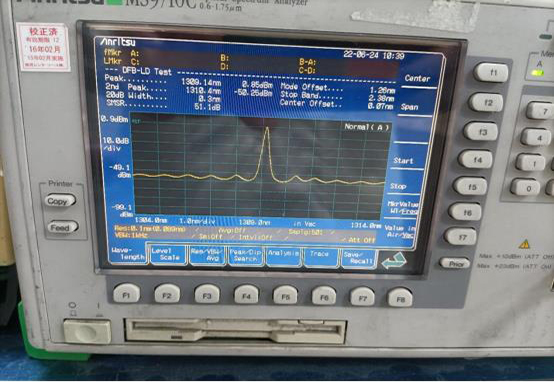What is the Light wave in details [Explained]
Light waves are electromagnetic radiation generated by electrons in the process of atomic motion. The movement of electrons in atoms of various substances is different, so the light waves they emit are also different.
Spectrum is a pattern of monochromatic light separated by a dispersion system (such as prism and grating) after polychromatic light is separated by a dispersion system, which is arranged in turn according to the wavelength (or frequency). It is called an optical spectrum in full.
When testing the transmitter tosa, we usually involve a parameter, SMSR (Side Mode Suppression Ratio). The ratio of the maximum value of the main mode strength to the side mode strength is called the side mode suppression ratio, which is an essential indicator of the longitudinal mode performance. Generally, when measuring the side mode rejection ratio, it needs to be used together with a marker and analysis in the spectral analyzer. The maker is used to identify the central wave peak and the highest secondary wave peak. Read the two peaks. The side mode rejection ratio is the energy level difference between the two peaks. It can be calculated through sub-options in analysis.
It is defined as the ratio of the primary longitudinal mode optical power M1 and the full side mode optical power M2 under the condition of full modulation.
The calculation formula is:
SMSR=10*lg(M1/M2)
In the optical transmitter, it is generally specified that the SMSR is greater than 30dB; that is, the optical power of the primary longitudinal mode is more than 1000 times the maximum side mode optical power. The higher the value of SMSR, the more concentrated the light way. As shown in the figure below: the SMSR is 51dB
The above is the explanation of Lightwave knowledge brought by Shenzhen HDV Phoelectron Technology Co., Ltd., which is an optical communication manufacturer and produces communication products company. Welcome you to visit our product page. Thanks for reading this article.
